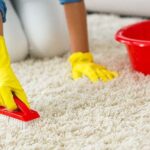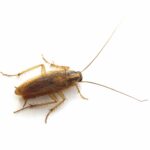Effective Home Carpet Cleaning Methods: Tips and Techniques
Carpets, essential elements in home decor, not only complete the aesthetic appeal but also provide a warm and comfortable surface to move on. Over time, especially in homes with children and pets, carpets can accumulate dirt, making periodic carpet cleaning essential for both health and visual appeal.
While professional assistance is available for carpet cleaning, there are times when you might prefer to clean your carpets using your own resources. In this guide, we’ll explore various methods, tips, and crucial considerations for effective and practical carpet cleaning, providing you with the knowledge to maintain a clean and visually pleasing home environment.
Practical Methods for Carpet Cleaning
Before diving into carpet cleaning methods, it’s crucial to discuss the importance of the cleaning cloth. The choice of cleaning cloth is as significant as the cleaning method itself.
Selecting the Right Cleaning Cloth:
When it comes to cleaning your carpet, the type of cleaning cloth you use is essential. Especially if you don’t have a specialized machine for carpet cleaning, the cleaning cloth plays a vital role.
Microfiber Cleaning Cloth:
Using a microfiber cleaning cloth for carpet cleaning is highly recommended. Microfiber cloths have the ability to clean surfaces without causing scratches, ensuring they won’t harm your carpets. By brushing your carpets with these cloths, you can effectively remove dirt and debris. Microfiber cloths are manufactured using special fibers, resulting in high dirt-capturing capacity, making them ideal for carpet cleaning.
Additional Tools for Easy Carpet Cleaning:
Besides the microfiber cloth, using a sponge or a carpet brush can significantly ease the cleaning process, especially for tougher stains or new carpets with loose fibers.
Now, let’s explore practical and effective methods for carpet cleaning:
1. Baking Soda: If you notice a stain on your carpet, immediate action is crucial. Baking soda can be a powerful ally in such situations. Mix baking soda with water to create a paste, apply it to the stain, and brush it with a suitable brush. After letting it sit for a while, use clear water to remove the baking soda mixture, effectively eliminating the stain.
2. Cornstarch: For a natural and economical approach to carpet cleaning, cornstarch can be a game-changer. Before moving on to wet cleaning, you can use cornstarch for dry cleaning. Simply sprinkle cornstarch over your carpet, let it sit for a few hours, and then vacuum it up. This method is particularly useful for removing surface dirt and refreshing your carpet’s appearance.
3. Dry Mint: Combining dry mint with the methods mentioned above enhances both the cleaning and refreshing aspects of carpet cleaning. By mixing cornstarch, baking soda, and dry mint, you create a powerful and natural carpet cleaner. Sprinkle this mixture over your carpet, let it sit, and then vacuum it up. Your carpet will not only be cleaner but also carry a fresh minty scent.
4. Aleppo Soap: For wet cleaning, Aleppo soap is a gentle yet effective option. By mixing a small amount of Aleppo soap with warm water, you can create a cleaning solution that is safe for your carpet. Apply this solution with a cloth or sponge, and after letting it work for a while, use clear water to rinse your carpet.
5. Vinegar: A classic household item, vinegar, can also be utilized for carpet cleaning. By mixing vinegar with warm water, you create a solution that effectively removes stains and odors. Apply the solution to the stained area, let it sit, and then blot it with a clean cloth. The acidity of vinegar helps break down stains and refresh your carpet.
Precautions Before and After Carpet Cleaning: To ensure effective and safe carpet cleaning, there are essential precautions to consider:
- Pre-Cleaning Vacuuming: Before starting the cleaning process, vacuum your carpet thoroughly. This step eliminates surface dust and prepares your carpet for more effective cleaning.
- Choosing Non-Chemical Products: Opt for cleaning products with minimal chemicals to prevent damage to your carpets and minimize health risks.
- Testing on a Small Area: Before applying any cleaning solution to your entire carpet, test it on a small, inconspicuous area to ensure compatibility.
- Wearing Gloves: When using cleaning solutions, especially those containing vinegar or soap, wearing gloves protects your hands from potential irritation.
- Avoiding Over-Wetting: Excessive water can lead to longer drying times and potential issues like mold or unpleasant odors. Ensure that your cleaning cloth is damp, not soaking wet.
- Adequate Drying: After cleaning, ensure proper ventilation to aid in the drying process. If possible, use fans or open windows to promote faster drying.
- Professional Consultation: For specialty carpets or uncertain situations, consulting professionals or the manufacturer is recommended.
Conclusion: Mastering the art of carpet cleaning with DIY methods allows you to maintain a clean and inviting home environment. By following the provided techniques and precautions, you can confidently address stains, refresh your carpets, and contribute to the overall well-being of your living space. However, for specific carpets or challenging situations, seeking professional advice is always a prudent choice.










